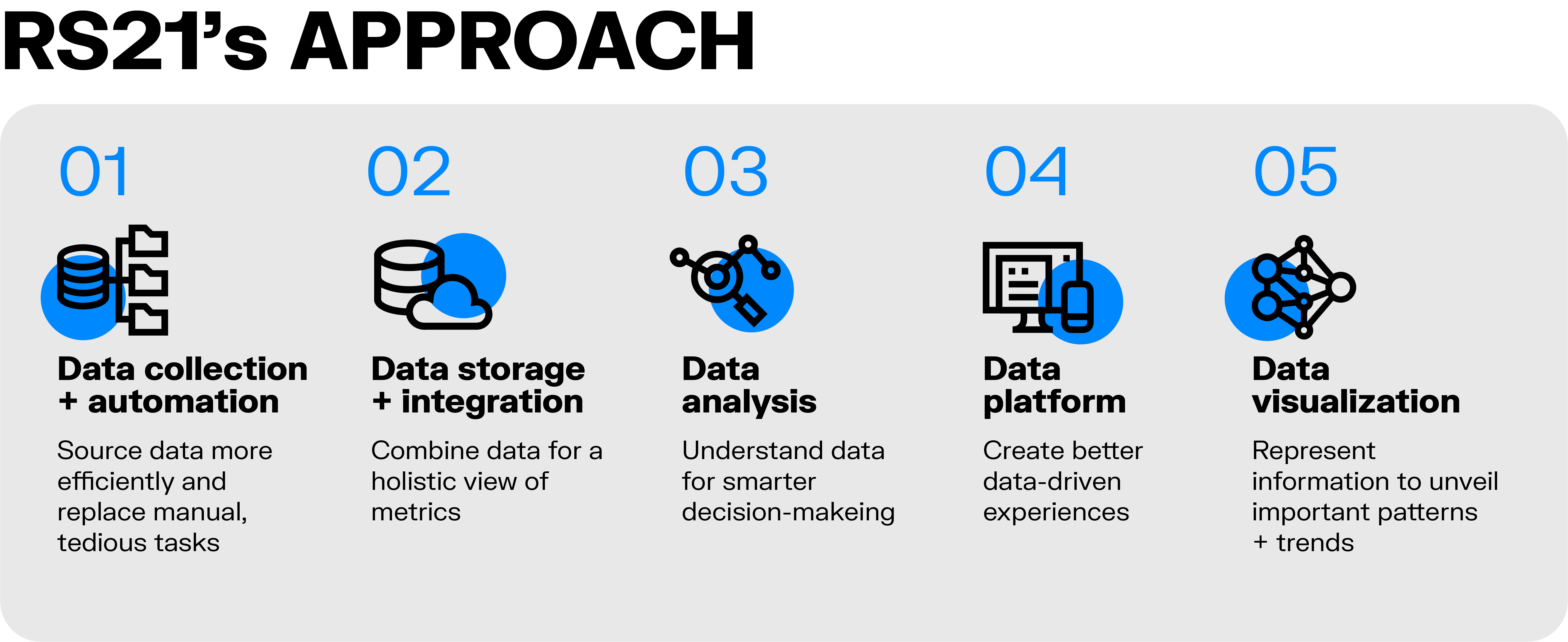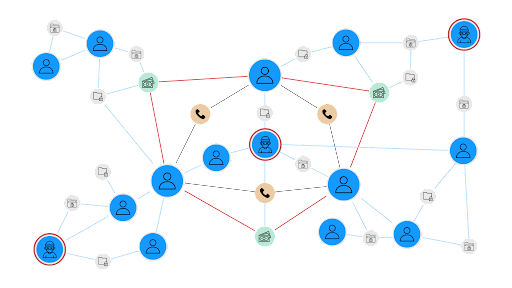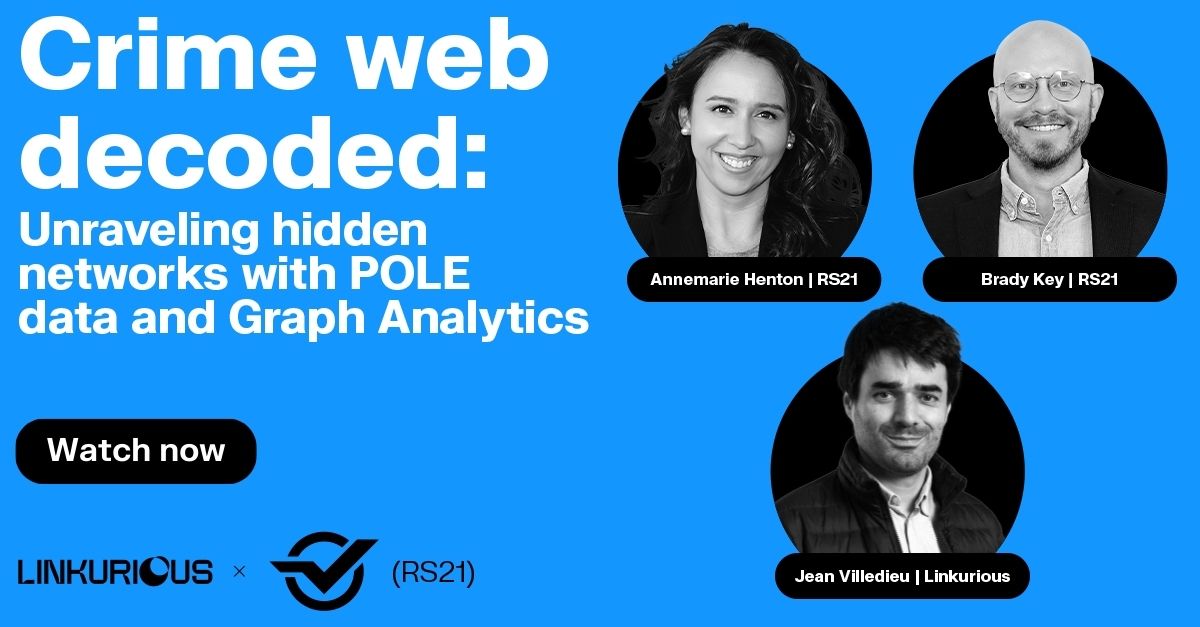Streamlining data investigation for criminal justice: How RS21 helps uncover criminal networks with link analysis
Law enforcement investigations, which play a key role in ensuring community security and safety, have increasingly become data investigations, relying on financial records, social media data, intelligence data, public records, and more. While these many data sources offer rich information to investigators, they also bring challenges. Beyond the sheer scale of today’s data, investigators must also bring together different data sources to start to make sense of them.
And once you bring together various data sources, how do you analyze the direct and indirect connections within them? Without the means to understand the connections, investigators run the risk of missing critical information or cues from their data.
RS21, a visionary data science company based in the United States, set to work building an optimal solution to facilitate data investigations for district attorneys’ offices - a solution that would transform data into a resource to improve community safety. They created Quaro, a tool combining the power of graph technology with an intuitive user interface, putting advanced link analysis into the hands of investigators to streamline case management and inform decision-making.
Crime has serious implications wherever it takes place, impacting everything from the quality of life of communities to the development of local economies. Citizens also simply want to feel safe in their communities. To effectively tackle crime and improve the criminal justice system, law enforcement increasingly relies on data.
Data can help pinpoint the elements that matter most for investigators. Statistically speaking, a small number of individuals within a given community are responsible for an outsized amount of crime (1). Many criminals also operate in organized networks - gangs, terrorist groups, cybercriminals, trafficking organizations - and gaining a precise understanding of those connections provides essential information to investigators. Data, when used correctly, can deliver this information to investigators.
But getting the right insights from data requires bringing together heterogeneous data sources and finding the connections that matter within. This is often easier said than done.
Finding the critical connections within data from various sources is as important as it is challenging. “Many organizations around the world are just scratching the surface when it comes to their data and systems evolution,” says Annemarie Henton, Director of State + Local Services at RS21. “Innovative data strategies tend to require a lot of time, money, and people.”
This is all the more the case as the data used by law enforcement grows in quantity and complexity. Having the right tools for the job becomes absolutely critical to get real value from their data.
Many of the traditional solutions available to investigators come with drawbacks, however. Take the three main types of data analysis solutions used by investigators today:
- Manual analysis of connections. This methodology is time-consuming, lacks scalability, and also leaves room for missed insights.
- Legacy link analysis software. This type of software is generally focused on small-scale data, often suffers from a complex user interface, and is not well adapted to modern environments.
- High-end intelligence platforms. While this type of software tends to perform well, it can also be expensive and demanding in terms of expertise and internal resources.
With these limitations of data investigation software in mind, RS21 developed Quaro as a fourth option. They aimed to resolve the drawbacks of the three existing types of solutions and bring intuitive, modern link analysis to law enforcement.
Initially developed for the office of the District Attorney in a county in the southwestern United States, RS21 developed Quaro to centralize data for the prosecution of serious crimes and to prevent repeat offenders. It reveals previously hidden links between people, locations, incidents and objects. It is designed to streamline prosecutorial decision making by enhancing (rather than replacing) the human element of decision making with data.
The team at RS21 developed Quaro to deliver several key benefits to the tool’s users:
- Data integration from various sources for a more comprehensive understanding of criminal networks and activities.
- Key player identification to enable investigators to prioritize cases and focus on the individuals who are of the most interest, in turn enabling them to better allocate resources.
- Inform decision making by enabling crime fighters to identify key patterns and trends within data.
- Enhanced collaboration features to better coordinate responses across multiple organizations.

The first step of putting the power of data into the hands of investigators and other criminal justice stakeholders is to make that data accessible. The DA client RS21 was working with was already collecting data - as are many criminal justice agencies. The problem was that it was not being used in a way that enabled investigators to see the kinds of networks and patterns they needed to see.
The data was being stored in a tabular format. Having data in rows and columns wasn’t conducive to drawing connections between key data points, however. Drawing connections and understanding networks using a tabular data format is, at best, time-consuming and not intuitive, and at worst is simply impossible.
RS21 transformed the data into a graph structure to overcome these limitations.

In a graph data model, the connections within the data are treated as first-class citizens. Individual data points are modeled as entities, while the way they connect to one another is modeled as an “edge” or relationship. For example, a person owns a car.
Nodes and edges can also be assigned properties, so you can see the VIN (vehicle identification number) of a vehicle node, for example. This structure lends itself naturally to analyzing and visualizing data as a network.
By structuring their data as a graph, RS21 built a platform where data could be directly analyzed as a network, streamlining the process of analysis and investigation.
RS21 approached the data structure in their graph investigation tool using a POLE data model.
This model focuses on four main types of entities - Persons, Objects, Locations, and Events - and looks at the relationships between them. In this case, Person nodes could be defendants, victims, witnesses, law enforcement agents, etc. An Object is anything that can be tracked in a unique manner, such as a gun with a serial number or a car associated with a VIN.
By ensuring these various elements are being modeled in a way that enables graph exploration, investigators are able to make connections that weren’t always apparent in a tabular data model. Specific connecting elements start to become more obvious. For example, it becomes much easier to see if the same gun is used in two different crimes. Or perhaps an investigator notices that the victim in one crime was a witness to another.
“Investigative insights can thrive once we start giving the networks and relationships of the data points that are already being collected by criminal justice agencies,” says Brady Key, Director of Software Development at RS21.
The final piece of the puzzle for RS21 was putting that networked data into the hands of users in a way that would enable them to easily explore it and find insights. For this, RS21 turned to Linkurious Enterprise, a graph visualization and analytics tool that delivers the power of graph to both technical and non-technical users.
“Adding Linkurious on top of the graph data structure lets users visualize things quickly and cleanly, in a user-friendly way. It’s intuitive,” says Brady Key. “We’re really able to make these relationships come to life.”
Using the Quaro interface built with Linkurious Enterprise, users can easily search for entities of interest and visualize the networks around them. This is especially useful when investigators are working on potentially related cases simultaneously. Graph visualization can quickly show if two cases are related - and how. Seemingly separate cases may also share data, leading investigators to understand they are part of the same, larger case. In a graph visualization, it’s fast and intuitive to draw these connections and to understand the broader patterns within the data.
The benefits of graph visualization and Quaro go beyond just criminal investigations. “Visualization helps law enforcement and criminal justice stewards better understand the structure and the dynamics of criminal networks,” says Annemarie Henton. “And with clearer pictures of criminal networks, criminal justice agencies can make better decisions about how they’re allocating resources, how they are planning interventions, and how they’re prioritizing targets.”
And, all of this is done with strong ethical considerations in mind: Quaro does not use predictive AI that may falsely pinpoint suspects, and has undergone fairness and bias protocols to avoid discriminatory outcomes. The tool simply puts previously collected data at the hands of key players for more effortless investigations and better informed decision making.
A spotlight on graph technology directly in your inbox.
